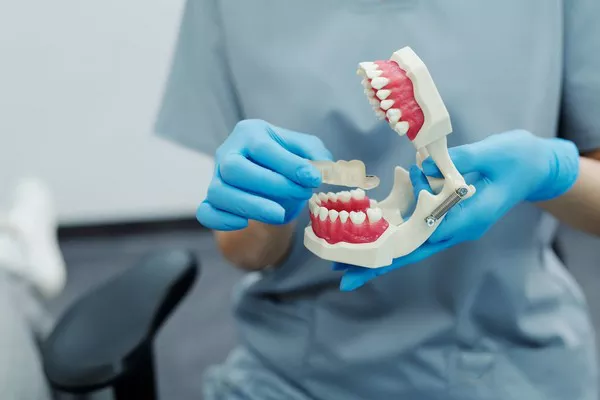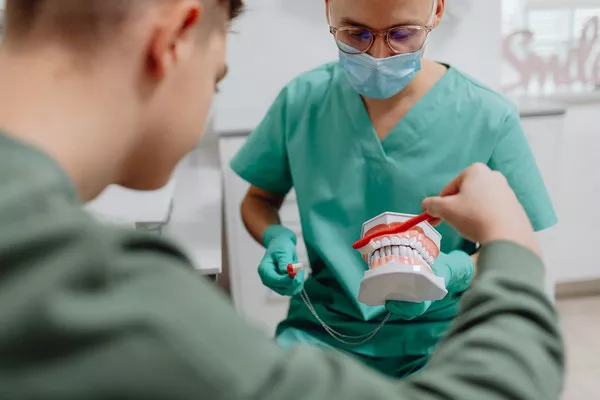Teeth whitening strips have become a popular choice for those seeking a brighter, whiter smile. However, some individuals may experience sensitivity or discomfort after using whitening strips. This article explores the reasons behind post-whitening sensitivity, offers tips for immediate relief, suggests desensitizing products, recommends fluoride treatments, advises on oral hygiene adjustments, and emphasizes the importance of consulting with a dental professional for severe or persistent pain.
Understanding Sensitivity
Teeth may become sensitive after using whitening strips, primarily due to the peroxide-based agents found in the strips. These agents penetrate the enamel to remove stains and discoloration, but they can also irritate the nerves inside the teeth, leading to temporary sensitivity. Additionally, the whitening process can dehydrate the teeth, making them more susceptible to sensitivity.
see also: Does white light teeth whitening work?
Immediate Relief
For immediate relief from pain or sensitivity after using whitening strips, consider the following tips:
Over-the-Counter Pain Relievers: Take over-the-counter pain relievers such as ibuprofen or acetaminophen to help alleviate discomfort. Follow the recommended dosage instructions provided on the packaging.
Desensitizing Products
Desensitizing toothpaste or gels can help reduce sensitivity after whitening treatments. These products contain ingredients such as potassium nitrate or fluoride, which work to block the nerve signals that cause sensitivity. Use desensitizing toothpaste or gel regularly, following the instructions provided, to help alleviate sensitivity over time.
Fluoride Treatments
Fluoride rinses or treatments can help strengthen tooth enamel and reduce sensitivity after whitening. Fluoride works to remineralize the enamel, making it more resistant to acid attacks and reducing sensitivity. Consider using a fluoride rinse or gel as part of your oral care routine, especially after whitening treatments, to help protect against sensitivity.
Soft-Bristled Toothbrush
Switching to a soft-bristled toothbrush can help alleviate sensitivity by being gentler on sensitive teeth and gums. Hard-bristled brushes can be abrasive and may exacerbate sensitivity, so opt for a soft-bristled brush and brush gently using a circular motion. Avoid aggressive brushing or scrubbing, as this can further irritate sensitive teeth.
Adjusting Whitening Habits
If you experience sensitivity after using whitening strips, consider adjusting your whitening habits to reduce discomfort. This may include:
Reducing Frequency: Use whitening strips less frequently or space out treatments to allow your teeth time to recover between sessions.
Lower Concentration: Switch to whitening products with a lower concentration of whitening agents to minimize sensitivity while still achieving gradual results.
see also: How much does Glo whitening cost?
Professional Consultation
If the pain or sensitivity persists or is severe, it is important to consult with a dental professional for personalized advice and treatment options. A dentist can assess the cause of the sensitivity and recommend appropriate measures to alleviate discomfort. Additionally, they can provide guidance on future whitening treatments and oral care practices to minimize sensitivity and maintain oral health.
Conclusion
Experiencing sensitivity or pain after using teeth whitening strips is a common concern for many individuals. By understanding the reasons behind post-whitening sensitivity and following the tips provided in this article for immediate relief, using desensitizing products, incorporating fluoride treatments into your oral care routine, switching to a soft-bristled toothbrush, adjusting whitening habits, and consulting with a dental professional for severe or persistent pain, you can effectively manage post-whitening sensitivity and enjoy the benefits of a brighter, whiter smile without discomfort. Remember to prioritize your oral health and seek professional guidance when needed to ensure a comfortable and healthy smile.
FAQs About Tooth Pain and Teeth Whitening Strips
1. How to relieve tooth pain from whitening strips?
If you’re experiencing tooth pain after using whitening strips, there are several steps you can take to help alleviate discomfort:
Discontinue Use: Stop using the whitening strips immediately to give your teeth time to recover.
Over-the-Counter Pain Relief: Take over-the-counter pain medication such as ibuprofen or acetaminophen to help reduce pain and inflammation.
Desensitizing Toothpaste: Use a desensitizing toothpaste containing ingredients like potassium nitrate or fluoride to help reduce tooth sensitivity.
Avoid Hot or Cold Foods: Limit consumption of hot or cold foods and beverages that may exacerbate tooth sensitivity.
Soft Diet: Stick to soft foods that are gentle on your teeth and gums until the pain subsides.
Consult Your Dentist: If the pain persists or becomes severe, consult your dentist for further evaluation and treatment recommendations.
2. How to stop sensitive teeth pain immediately after teeth whitening?
If you’re experiencing sensitive teeth pain immediately after teeth whitening, try the following tips to help alleviate discomfort:
Rinse with Warm Water: Rinse your mouth with lukewarm water to help soothe sensitivity.
Apply Desensitizing Gel: Use a desensitizing gel provided by your dentist or available over-the-counter to help reduce tooth sensitivity.
Avoid Acidic Foods and Beverages: Steer clear of acidic foods and beverages that can exacerbate tooth sensitivity.
Use Fluoride Mouthwash: Rinse with a fluoride mouthwash to help strengthen tooth enamel and reduce sensitivity.
Consult Your Dentist: If the sensitivity persists or worsens, contact your dentist for further evaluation and treatment options.
3. How long will my teeth hurt after Crest whitening strips?
Tooth sensitivity or discomfort after using Crest whitening strips can vary from person to person and typically resolves within a few days to a week. If the pain persists beyond this timeframe or becomes severe, it’s essential to consult your dentist for further evaluation and treatment.
4. Why is there a shooting pain in my tooth after whitening strip?
Shooting pain in a tooth after using whitening strips may be due to increased tooth sensitivity caused by the bleaching agent in the strips. This sensitivity occurs when the peroxide in the whitening strips penetrates the enamel and reaches the underlying dentin, irritating the nerve endings in the tooth. If you experience shooting pain or discomfort after using whitening strips, discontinue use and consult your dentist for further evaluation and treatment.
You Might Be Interested In































